Rhodesian Ridgeback
The Rhodesian Ridgeback is a dog breed developed in South Africa called „African Lion Dog“and „African Lion Hound“. The breed was first found in the 16th century on the Cape of Good Hope in Africa. They were discovered by Europeans that were exploring that area and found the Hottentot tribes living with a semi-domesticated dog. That dog had hair along his spine growing backward – today, we call that “the ridge” the Rhodesian Ridgeback is famous for.
This breed was developed for hunting purposes, and it needed to tolerate well the rigors of the African bush and drastic changes in temperature during the day and night. The Rhodesian Ridgeback was also meant to protect the villagers from wild animals.
Dog Breed Video

Height:
24-27 in (61-69 cm)

Weight:
70-80 lb (32-36.5 kg)

Origin:
South Africa

Life Expectancy:
10-12 years
Dog Breed Characteristics
The Rhodesian ridgeback is a strong, muscular, and athletic dog. It is also a confident and intelligent dog that is a fast and powerful hunter. They come in only one color – wheaten - that ranges from light wheaten to red wheaten. These dogs are pretty well-balanced with a solid muscular structure. They are very agile and active with a very symmetrical outline. The Ridgebacks were bred for hunting, and breeders made sure that they have great endurance and speed.
FUN FACT: Although the ridge is their hallmark, not all Rhodesian Ridgebacks have ridges on their back.
We already mentioned that these dogs were registered by the South African Kennel Union in 1924, and the original standard was supplied to most of the major cynology associations around the world. The two cynology associations whose Ridgeback standard we will explore are the AKC (American Kennel Club) and the FCI (Fédération Cynologique Internationale). Both of these associations are huge cynology authorities and are very respected.
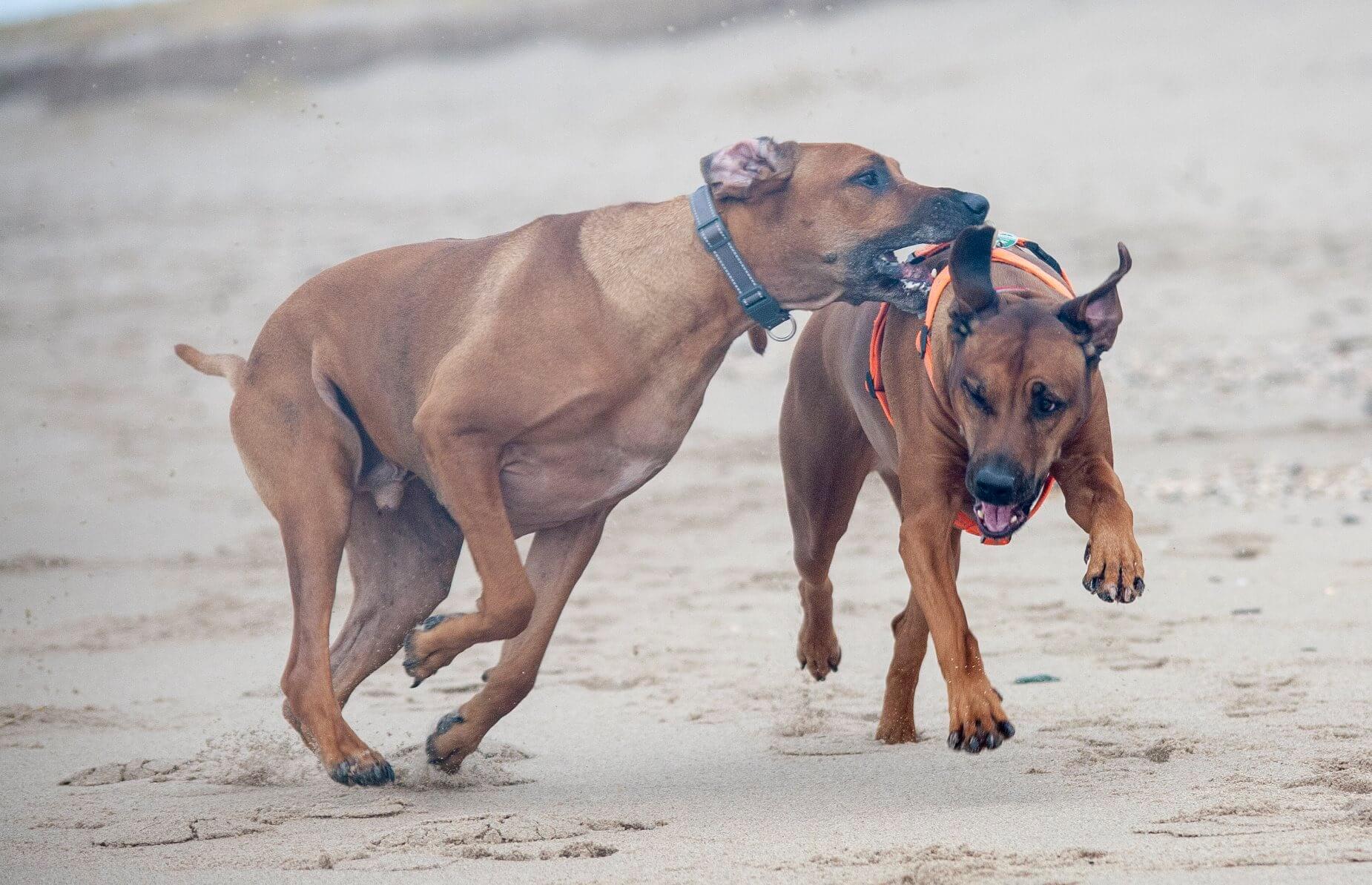
Care
Ridgebacks are easy to maintain. Their smooth coat’s shedding is minimal. An occasional bath, brushing fur, and trimming nails when necessary are everything this breed needs. As shedding isn’t their biggest problem, brushing them once a week with a wide brush will be more than enough. They don’t require baths too often, and once every month and a half will do the trick.
You could do it more often if the dog lives inside so you will prevent any dirt and bad odors; however, you can also do that by wiping them down with wet wipes or moist towels to get the dirt off them.
Check their ears regularly for any indication of redness or infection, and clean them using only a soft cotton cloth. Never insert anything in their ear canal, and ask your Vet for advice on which products to use. A good thing to know is that you should always use dog products as human products, such as shampoos or conditioners, can contain chemicals that can harm your dog.
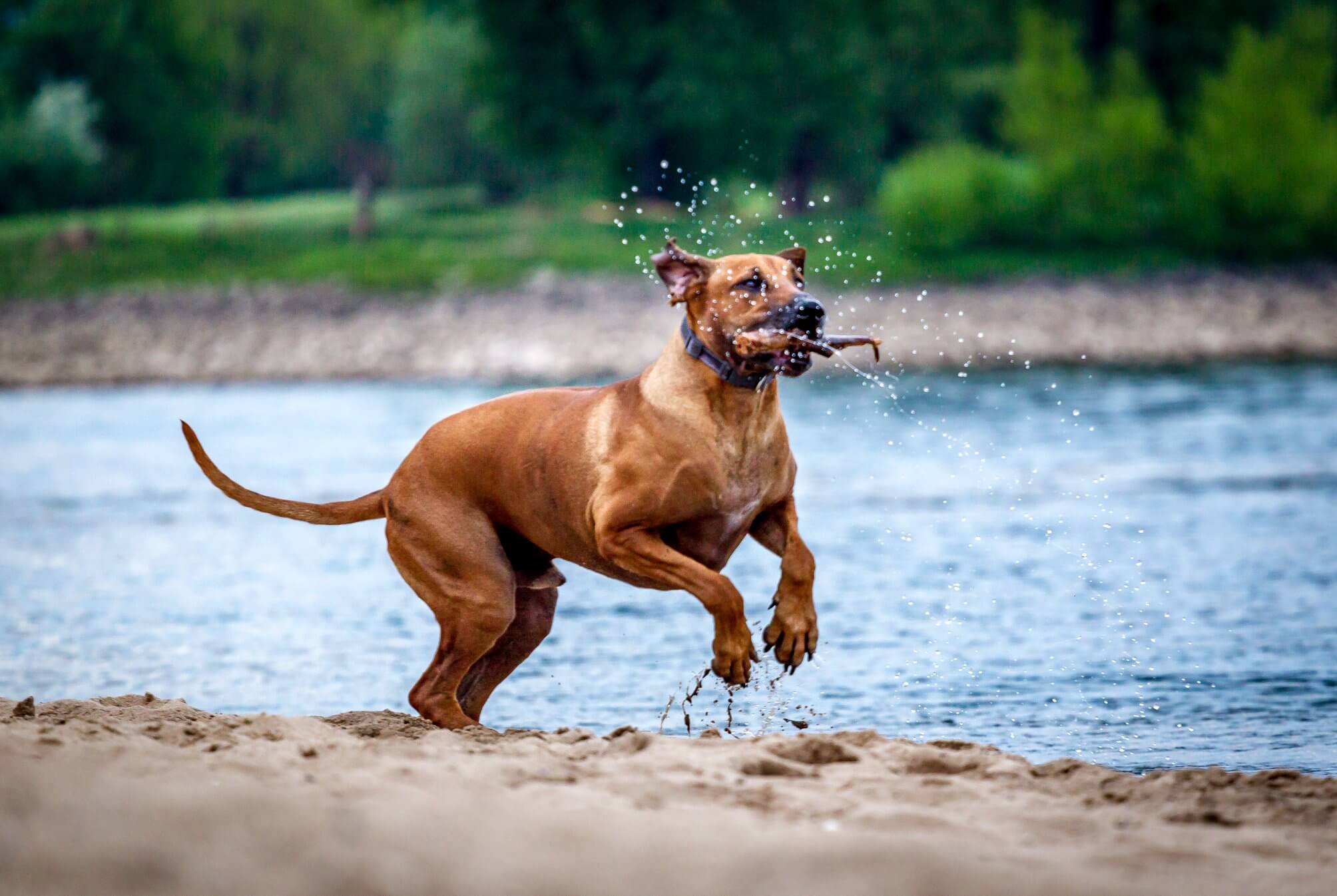
Training a Rhodesian Ridgeback
Because it takes a lot of devotion and energy to train this breed properly, the Rhodesian Ridgeback is not for everyone. These dogs are very trainable, but only in the right hands. This breed requires a lot of exercise daily. As they were developed in Africa, they can withstand a lot of activity at very high temperatures. This dog thrives on athletic activities and can become anxious and destructive if their exercise needs are not met.
Also, training a Rhodesian Ridgeback can be tricky. They need to be trained with a firm hand but never with harshness. Training must be constant because they love to test boundaries, and if the rules are bent once, your dog will take that as an invitation to rule the house. Also, consistent training is necessary if you want to be able to trust your Ridgeback off-leash. Their natural tendency to hunt makes them unreliable to unleash.
Temperament
Because these dogs are loyal and affectionate, they are very popular as family dogs. It is known that their ideal living situation is indoors with family members. They are great protectors of their families and get along with children.
These dogs are also very independent and are very intelligent. That can be extremely frustrating on one hand, but if you know how to handle such a dog, it can be extremely fulfilling and rewarding. They are the most territorial and protective of the hounds and are reserved towards strangers. They generally don’t bark a lot but will alert their family if something unusual is happening around them (some of them bark when they are bored).
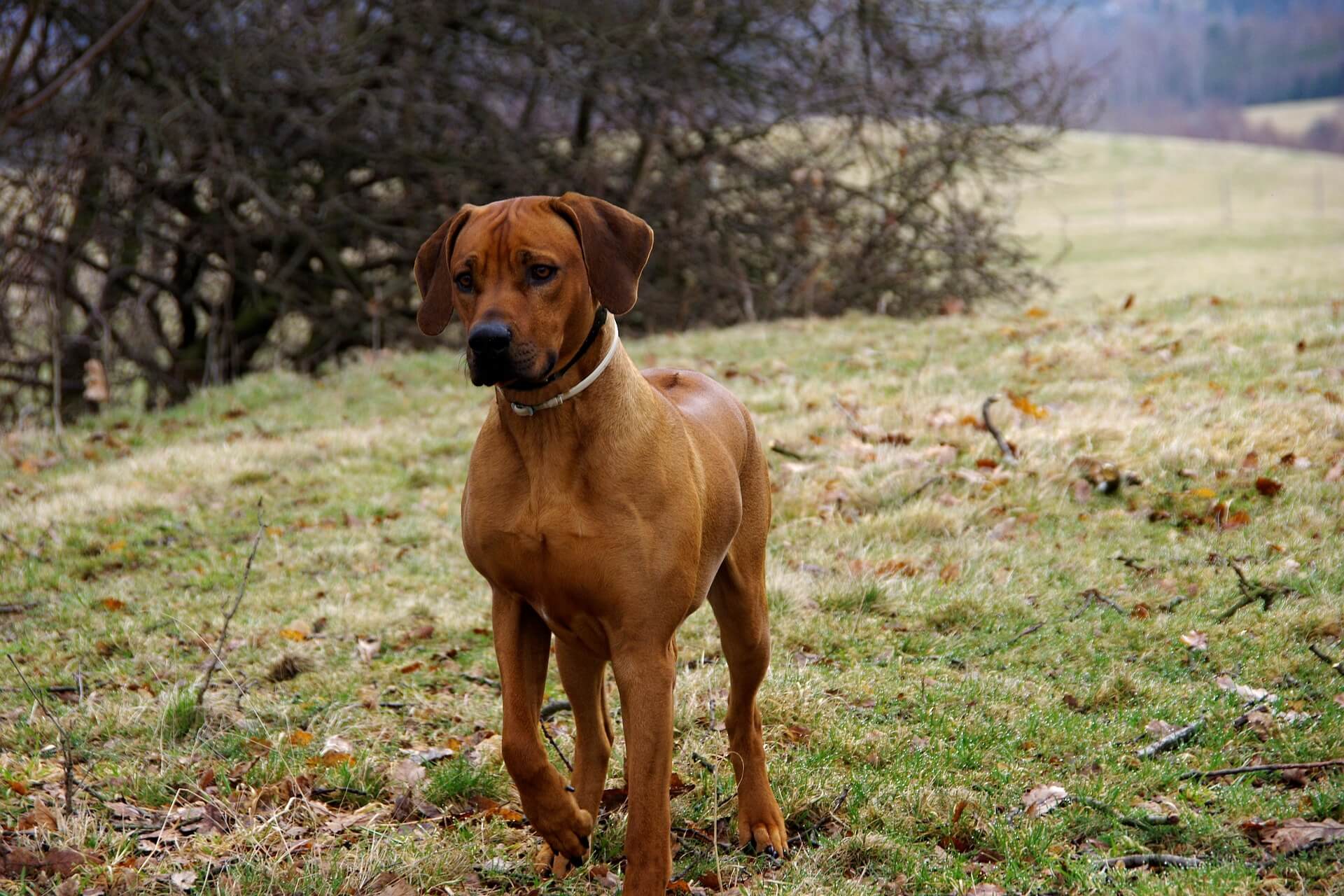
Socialization
The process of socialization should play a big part in every dog’s life and should start as early as possible, especially with such a dominant and strong dog breed. Try and expose your Ridgeback puppy to different sights, sounds, situations, people, and other dogs so that your new puppy may learn how to properly react and adapt to any situation it might find itself in.
Proper socialization will make sure your puppy develops into a stable, well-balanced, and well-behaved dog.
Ridgebacks and other pets
These dogs have a high prey drive, so they are not the best breed to keep around other, smaller pets such as rodents, cats, or birds. They can snap and go on the hunt for small animals. They can learn to get along with other animals as well, under the condition they are raised together. Their natural instinct to protect may turn into aggression sometimes, and that is why they should be socialized from an early age.
Rhodesian Ridgebacks can be dominant with other animals and can be aggressive toward dogs of the same sex.
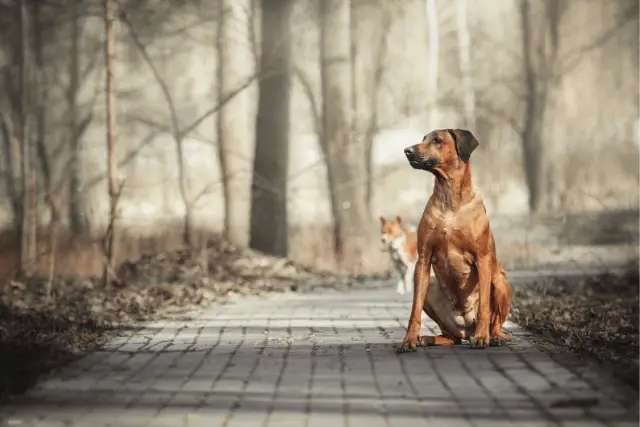
Health issues
Rhodesian Ridgebacks are generally very healthy, with an average lifespan of 10 to 12 years. Like every other breed, Ridgebacks are prone to some health issues. This does not mean your dog will necessarily develop them, it is just a good idea that you are familiar with them as early detection and prevention can be critical if some of these issues do occur.
Most of these problems have nearly been bred out of the breed so you must get a dog from a reputable and responsible breeder. Some of these health problems include hip and elbow dysplasia and dermoid sinus (a skin condition that can be treated with surgery).
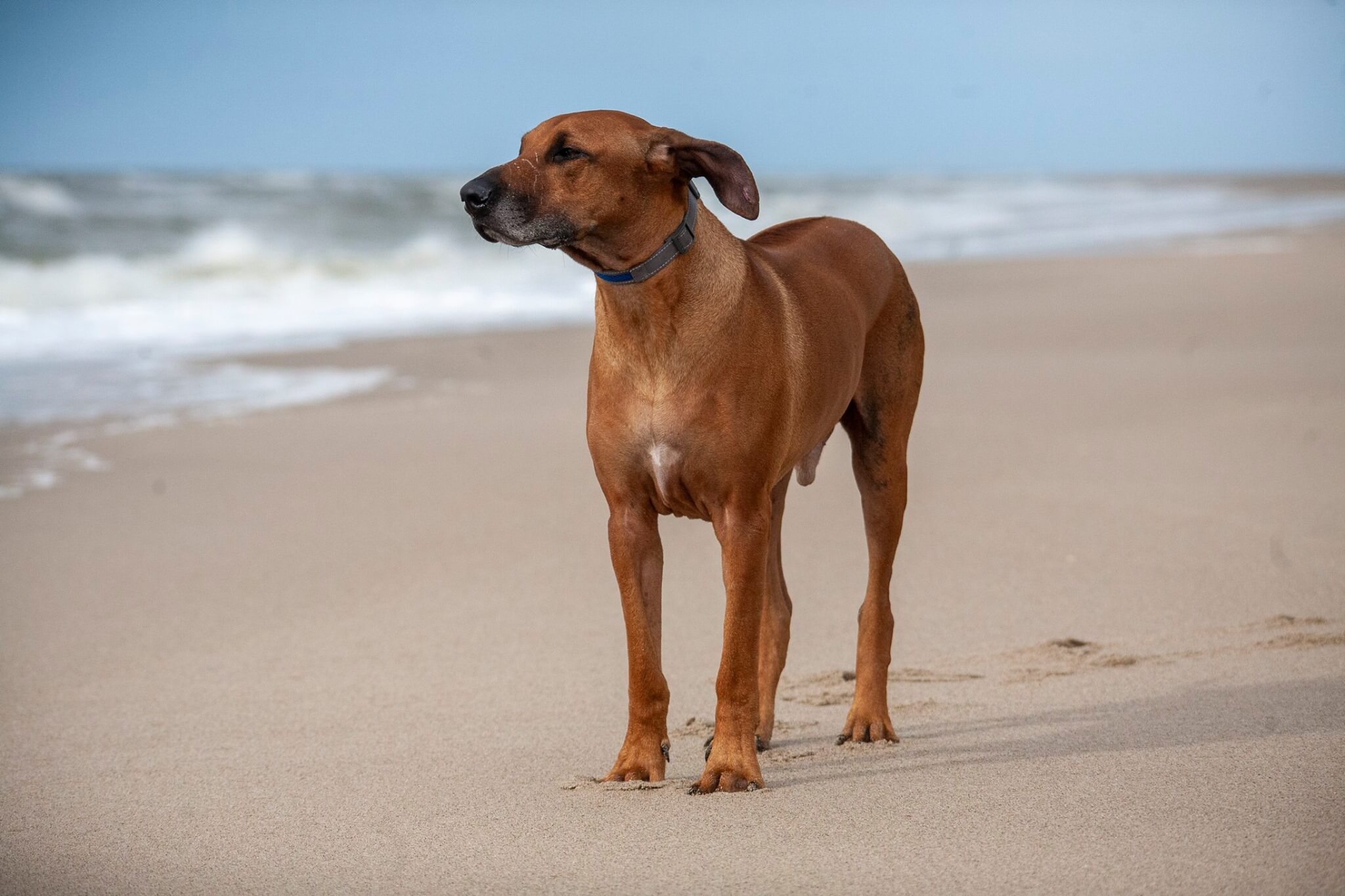
Rhodesian Ridgeback breeders
If you have decided to buy yourself a Rhodesian Ridgeback, prepare to cash out around $900 to $1200 USD. Puppies will cost even more if their parents are show quality. When buying a Rhodesian Ridgeback, make sure you are doing business with a responsible Rhodesian Ridgeback breeder. A responsible, good breeder will welcome your questions about the dog’s background, history, temperament, health clearances, etc. Avoid breeders that are only interested in whether you’ll be paying with cash or a credit card.
Here at World Dog Finder, we work exclusively with breeders of the highest standards and require them to send us the necessary documents that show us they are registered with the FCI and their national cynology associations.
But buying a Rhodesian Ridgeback is not the only way you can get yourself a quality dog. Many dogs in shelters are waiting to be loved as they deserve. Check out your local shelters, maybe there is a Rhodesian Ridgeback waiting for you.
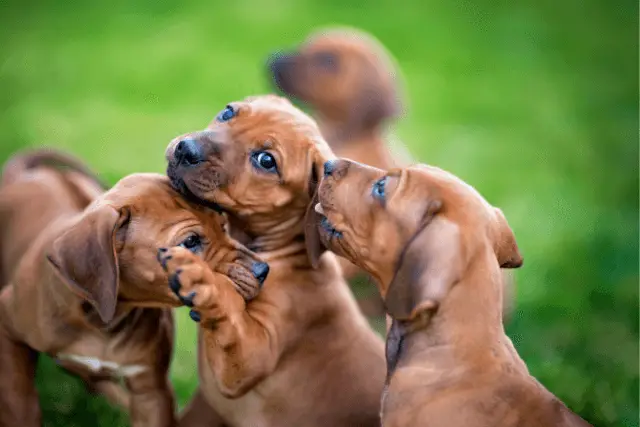
FUN FACT: Ridgebacks have two nose colors - black and brown.
World Dog Finder team

Updated at30.08.2023.
Breed History
This breed was developed by the Boer farmers, Dutch settlers who came to South Africa to pursue diamonds and precious metals in the 16th century. They are credited for developing Rhodesian Ridgebacks and the Boerboel (also known as South African Mastiff). These farmers wanted a versatile dog breed that could thrive and hunt in the harsh African climate and tasked them with many different jobs such as hunting, protecting, and keeping company to the whole family.
They started the process of developing this breed by crossbreeding European dogs they brought with them, such as Greyhounds, Bloodhounds, Great Danes, and Mastiffs, with the local, semi-domesticated dog breeds that the natives kept called Khoikhoi. These local dogs had ridges that went all the way along their back, and Boer farmers noticed the correlation between the back ridge and the ability to hunt.
These new dogs were primarily used for hunting by flushing or taking down wounded animals such as antelope or other deer-type animals. As time passed by and hunting big game became more and more popular, the Boer farmers started using these dogs to hunt lions. The hunters rode horses, and the dogs would surround a lion and keep them in place until the hunters arrived.
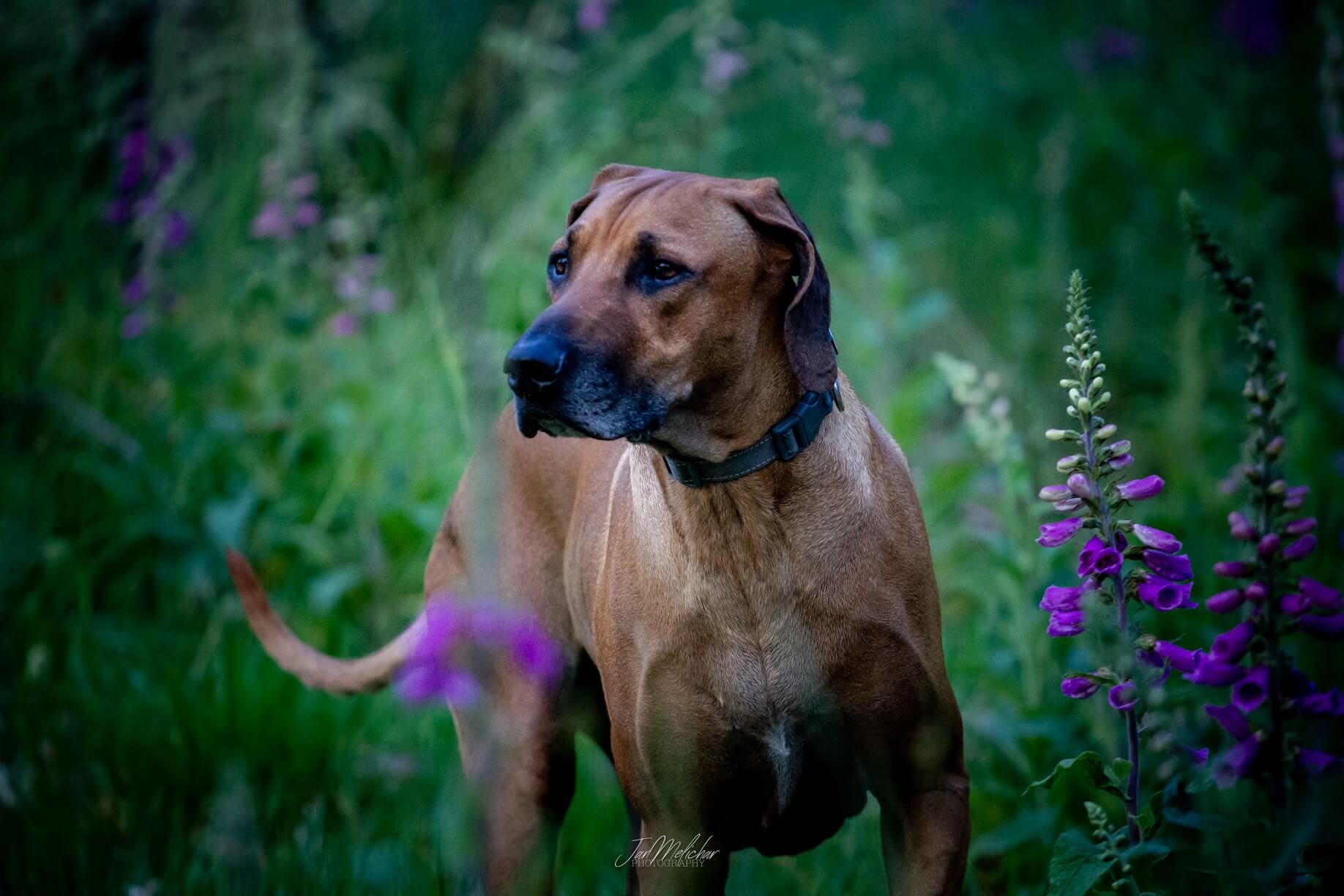
This breed was named after the region called Rhodesia (modern-day Zimbabwe), where their breeding program was set up. The man credited for starting that program was a Dutch hunter named Cornelius von Rooyen. He and his associates wrote down a complete description of these dogs and described their appearance and character in great detail.
The breed standard was finished in 1922 and has seen little to no change since then. Two years after the Rhodesian Ridgeback was fully recognized and registered by the governing body of South Africa - the South African Kennel Union
Even though it is nearly a 400-year-old breed, not many dogs have been exported outside their native place and region of South Africa. The earliest Ridgebacks that were introduced to the United States of America were imported in 1911, but they haven’t become truly popular until about 10 years after the end of World War II. At that time, many Ridgeback specimens were exported from South Africa across the globe to Europe, the United States, Great Britain, and Canada.
These days, the Rhodesian Ridgeback is among the top 50 most popular dog breeds in the world.
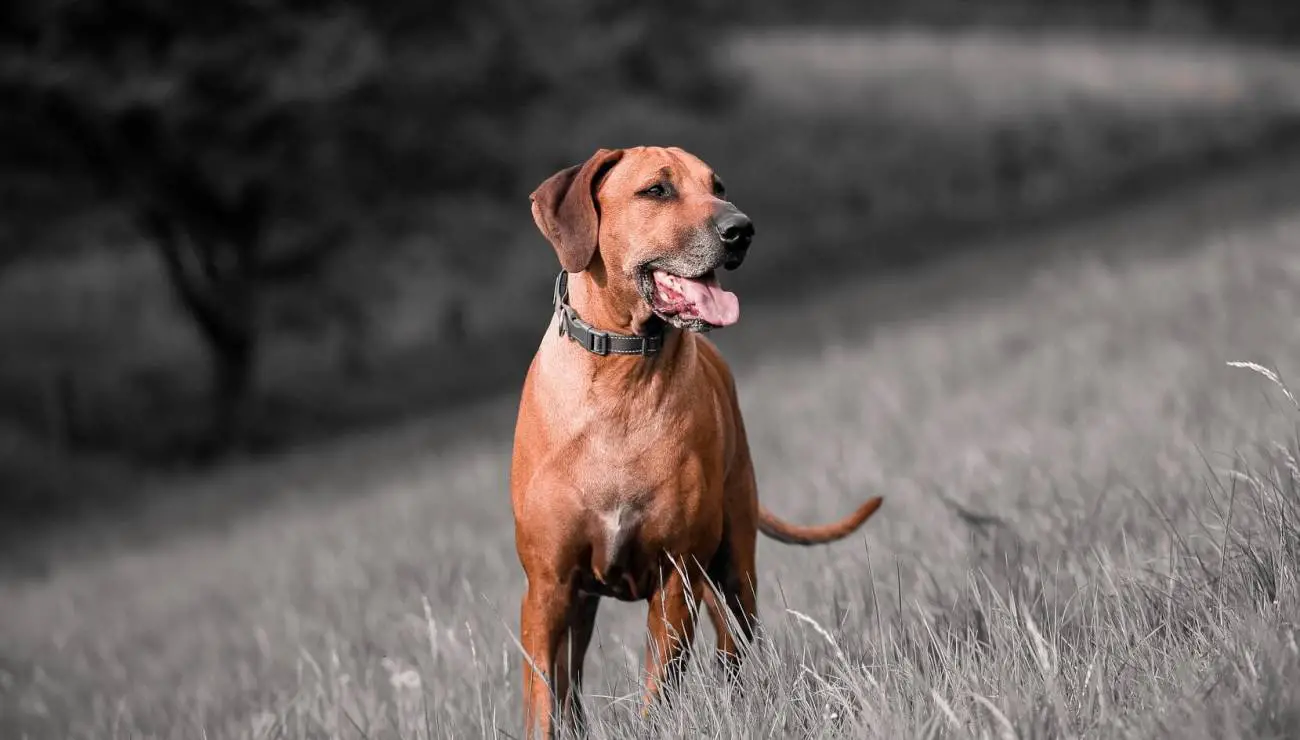
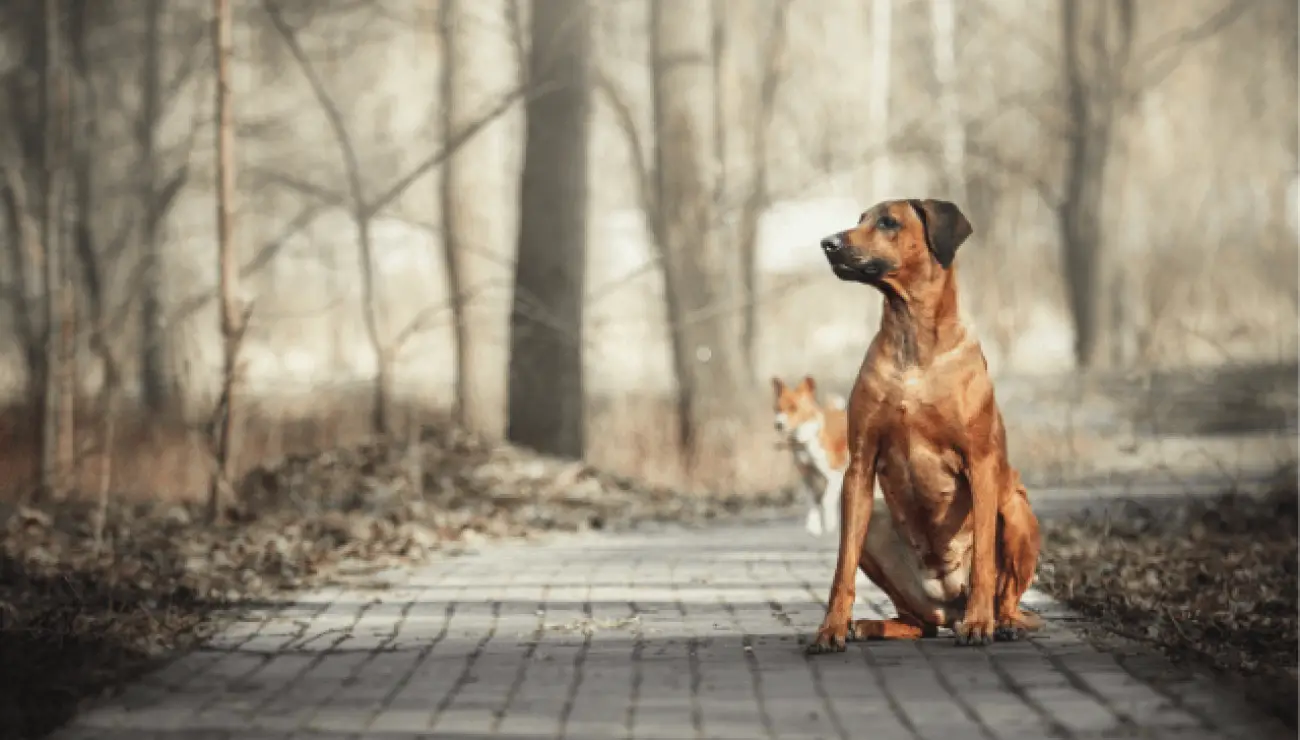
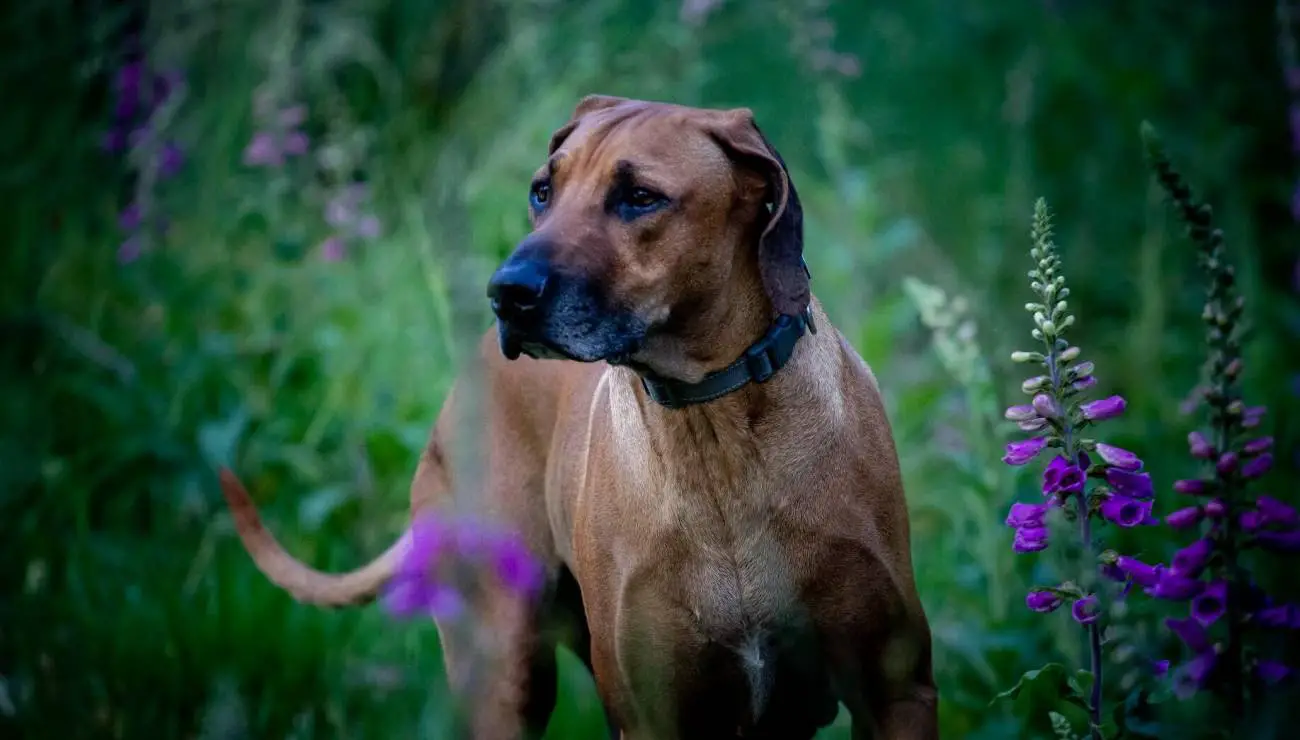
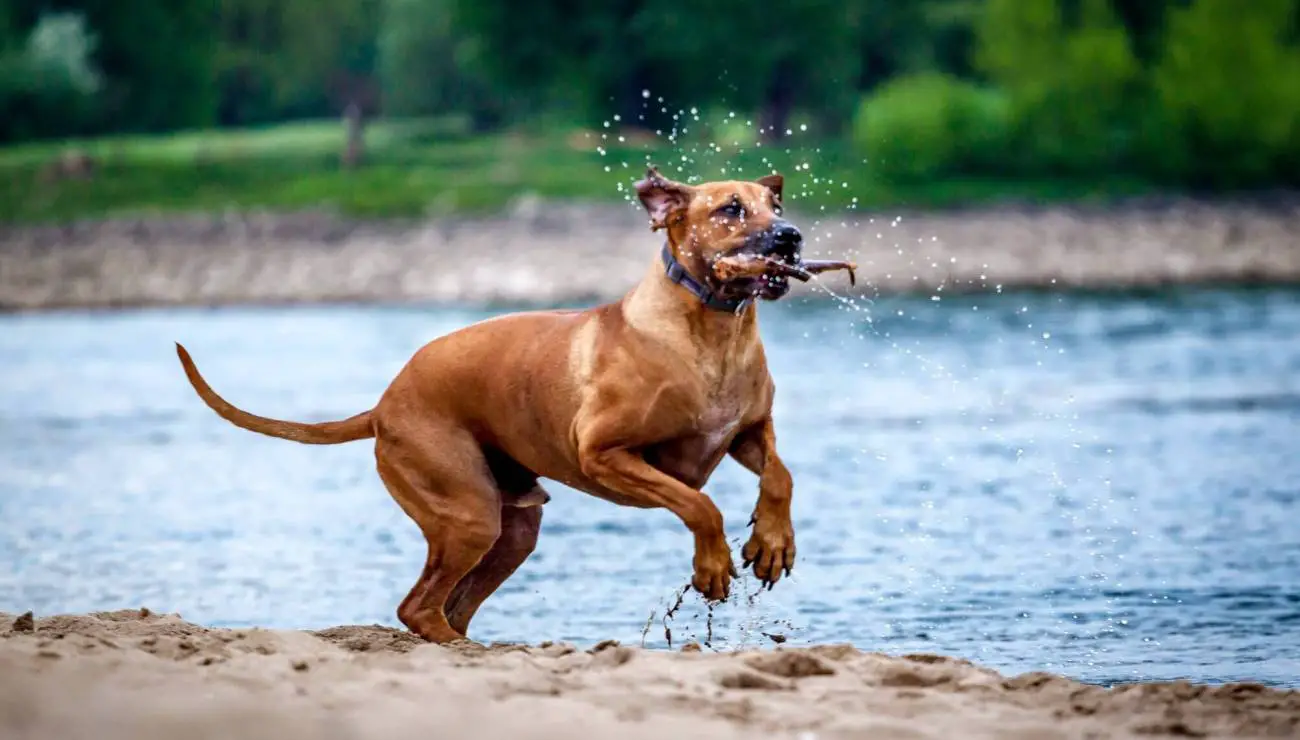
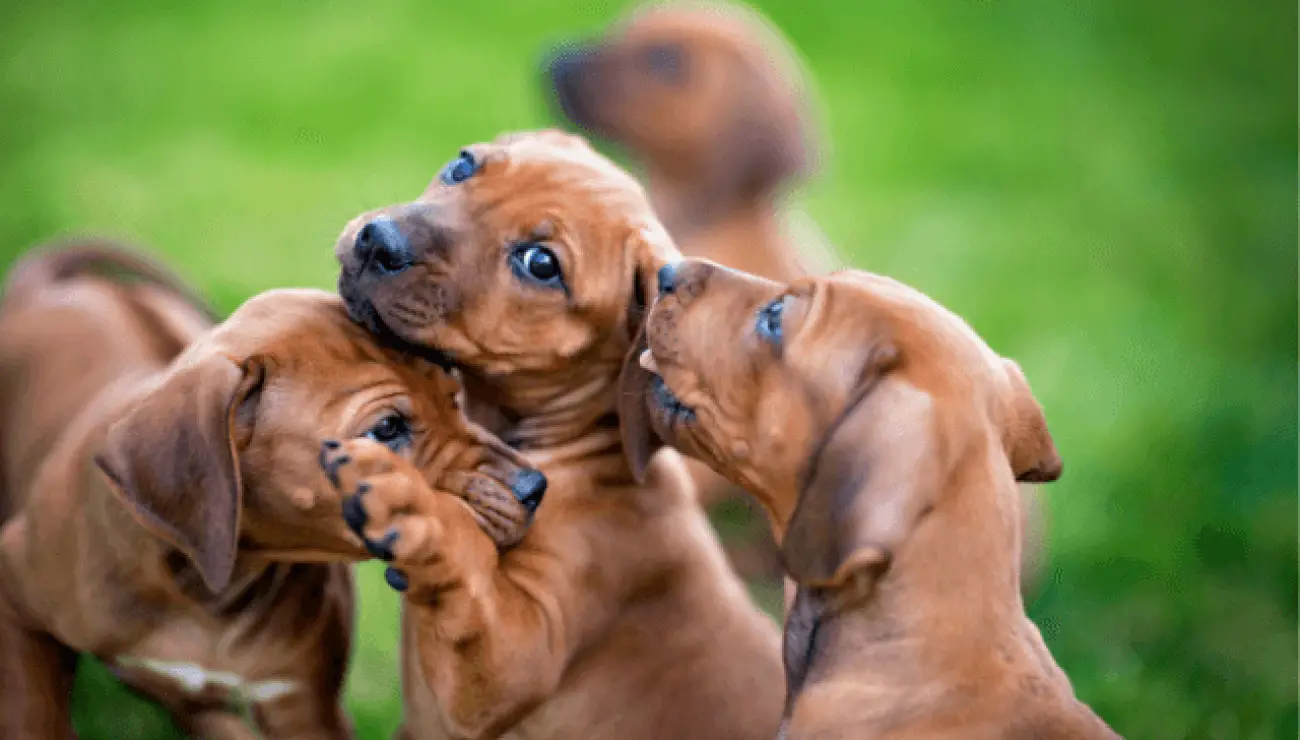
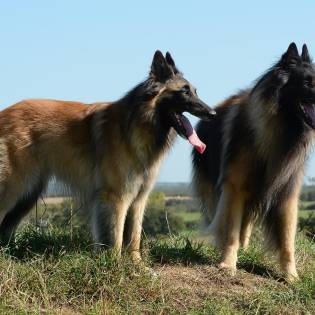
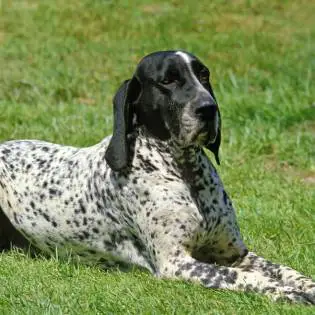

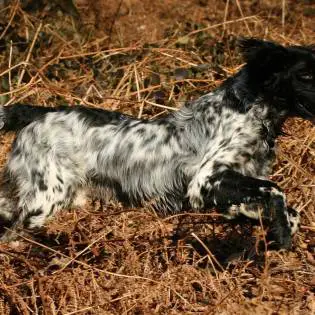
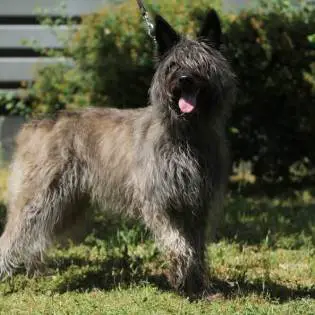
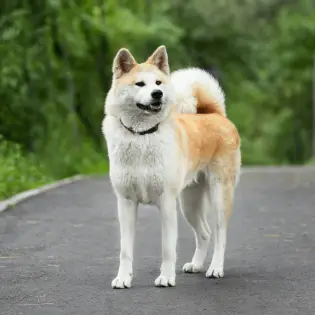
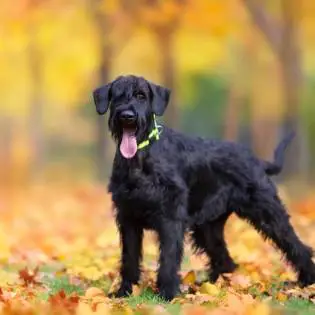
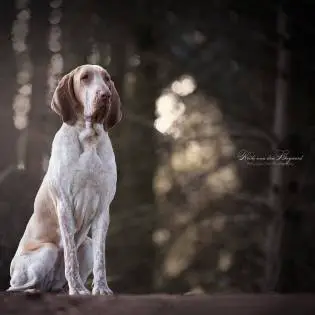


Share